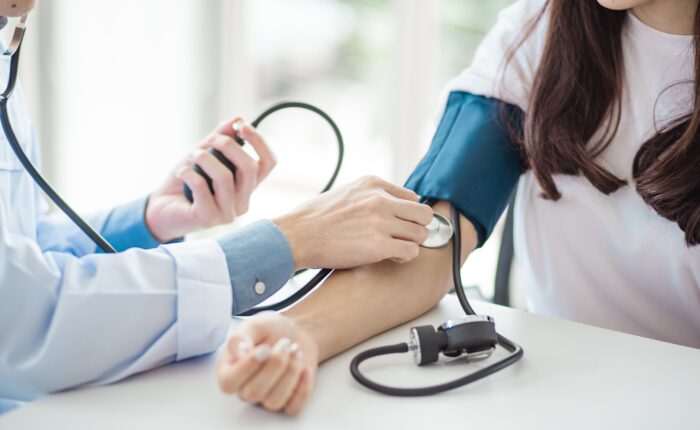Low Blood Pressure – Signs, Symptoms & Treatment

Low blood pressure, also known as hypotension, is a condition where the blood pressure in your arteries is too low. Blood pressure is the force exerted by the blood on the walls of the arteries. It is measured in millimeters of mercury (mmHg) and is expressed as two numbers: systolic pressure (the higher number) and diastolic pressure (the lower number). The normal range for blood pressure is 120/80 mmHg, although this can vary from person to person.
Low blood pressure is generally considered to be a problem only if it causes symptoms. Symptoms of low blood pressure include dizziness, lightheadedness, fainting, blurred vision, nausea, and fatigue. In severe cases, low blood pressure can lead to shock, which is a life-threatening condition.
Causes of Low Blood Pressure:
Low blood pressure can be caused by a variety of factors, including:
Dehydration: When your body loses too much fluid, your blood pressure can drop.
Medications: Certain medications can lower your blood pressure, including diuretics, beta-blockers, and some antidepressants.
Heart problems: Heart conditions that can cause low blood pressure include bradycardia (a slow heart rate), heart failure, and heart attack.
Endocrine problems: Disorders of the endocrine system, such as thyroid disease and adrenal insufficiency, can cause low blood pressure.
Blood loss: Severe blood loss from an injury or surgery can cause low blood pressure.
Pregnancy: During pregnancy, a woman’s circulatory system expands, which can cause low blood pressure.
Signs of Low Blood Pressure
• Dizziness: This is a common symptom of low blood pressure. It may feel like lightheadedness or a spinning sensation.
• Fainting: In severe cases of low blood pressure, you may lose consciousness, or faint.
• Blurred vision: Low blood pressure can cause temporary vision changes, such as blurred or tunnel vision.
• Nausea: Low blood pressure may cause nausea or an upset stomach.
• Fatigue: Feeling tired or weak may be a sign of low blood pressure.
• Rapid or shallow breathing: Breathing may become rapid or shallow due to low blood pressure.
• Pale, cool, or clammy skin: Low blood pressure may cause the skin to appear pale, cool, or clammy to the touch.
• Rapid or weak pulse: A low blood pressure may cause a rapid or weak pulse.
• Confusion or difficulty concentrating: Low blood pressure may cause confusion, difficulty concentrating, or feeling mentally foggy.
• Chest pain: Chest pain may occur in some cases of low blood pressure, particularly if it is related to heart disease.
Treatment of Low Blood Pressure:
The treatment of low blood pressure depends on the underlying cause. If low blood pressure is caused by dehydration, drinking more fluids can help raise blood pressure. If medication is the cause, changing the medication or adjusting the dosage may be necessary.
In severe cases of low blood pressure, hospitalization may be necessary. In these cases, fluids and medications may be given intravenously to raise blood pressure.
Prevention of Low Blood Pressure:
There are several ways to help prevent low blood pressure, including:
1. Drinking plenty of fluids: Staying hydrated can help prevent low blood pressure.
2. Eating a healthy diet: A diet that is rich in fruits, vegetables, and whole grains can help prevent low blood pressure.
3. Avoiding alcohol: Drinking alcohol can lower your blood pressure, so it’s best to avoid it or drink it in moderation.
4. Exercise: Regular exercise can help prevent low blood pressure.
5. Taking medications as prescribed: If you are taking medications that can lower your blood pressure, make sure to take them as prescribed.
In conclusion, low blood pressure is a condition that can be caused by a variety of factors. While it is generally not a problem unless it causes symptoms, severe cases can lead to shock, which is a life-threatening condition. Treatment depends on the underlying cause, and prevention involves staying hydrated, eating a healthy diet, avoiding alcohol, exercising regularly, and taking medications as prescribed. If you are experiencing symptoms of low blood pressure, it is important to talk to your doctor to determine the underlying cause and the best course of treatment.



